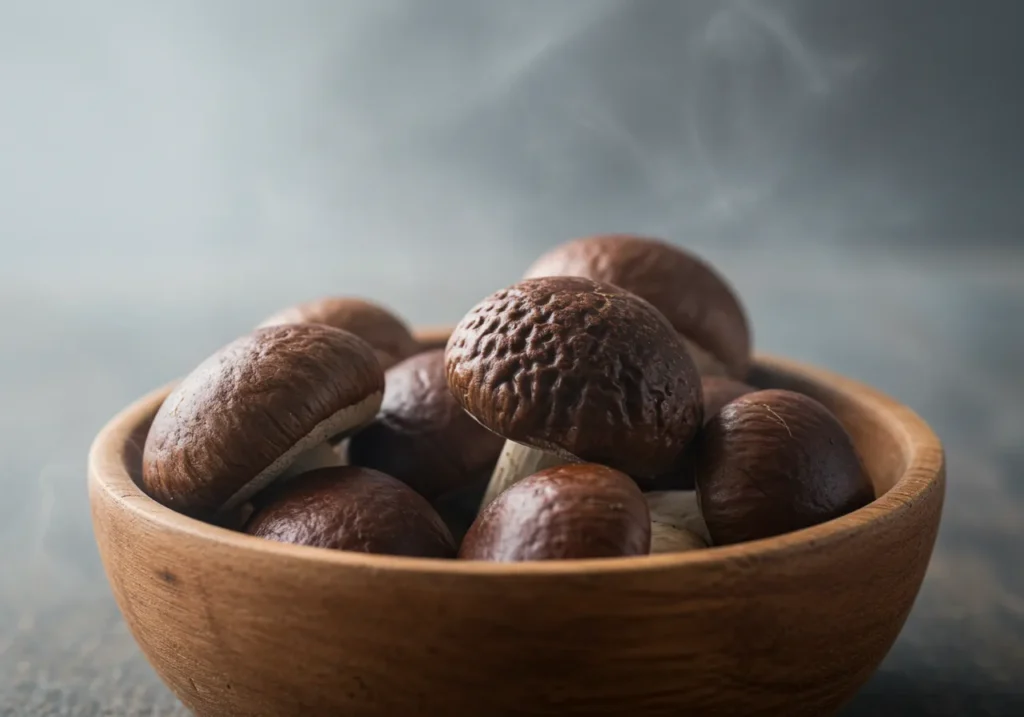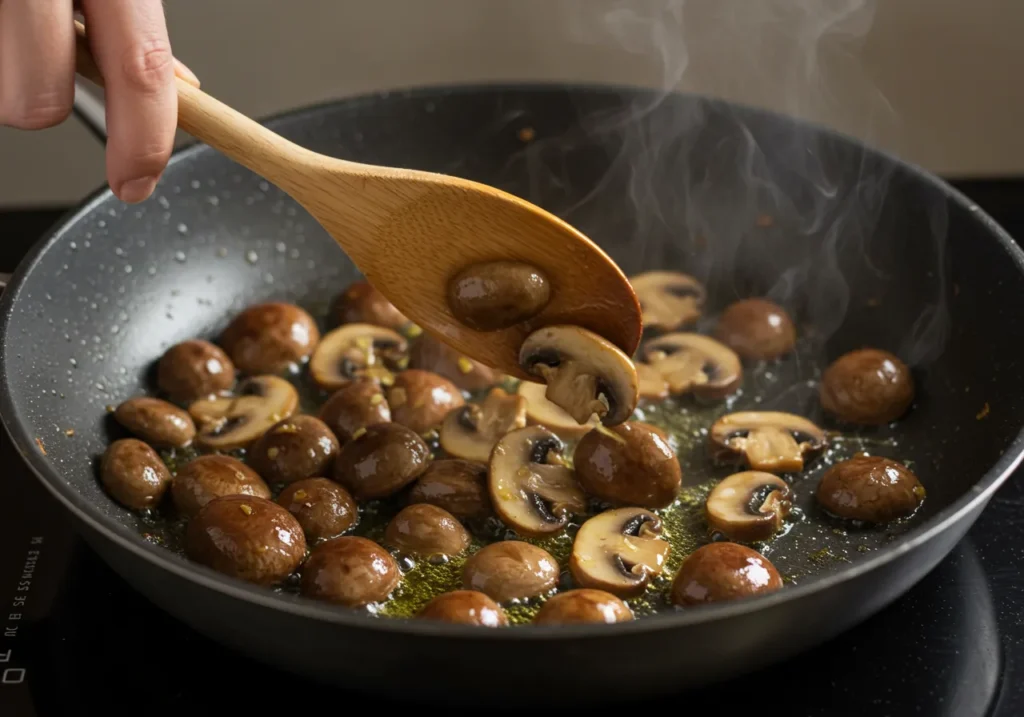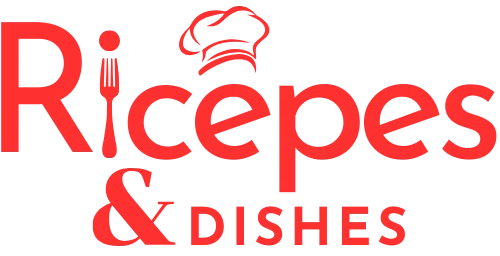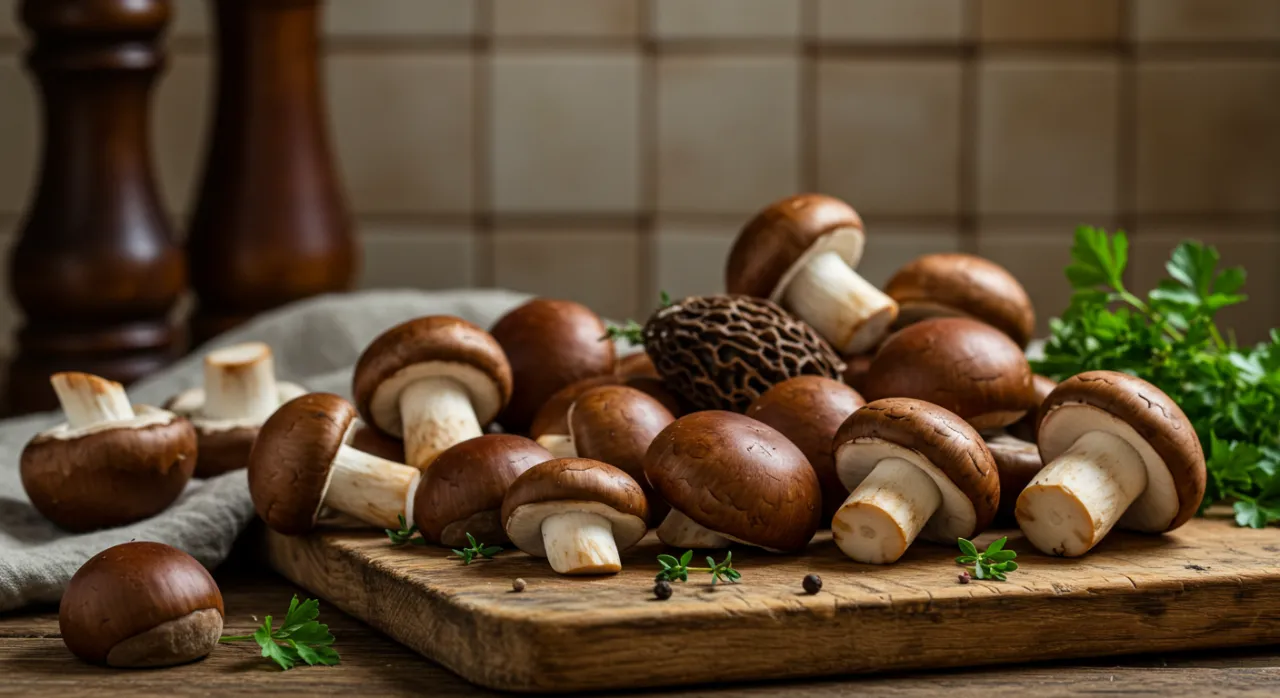Chestnut mushrooms—let’s talk about them! These little fungi are not only delicious but are also a great addition to your meals, bringing a deep, savory flavor that pairs well with almost everything. In this article, we’ll dive into everything chestnut mushrooms, from what they are to how you can cook and grow them yourself. Whether you’re a mushroom newbie or a seasoned chef, you’ll find tons of useful tips and tricks to bring these beauties into your kitchen.
Table of contents
What Are Chestnut Mushrooms?
You’ve probably spotted chestnut mushrooms at your local grocery store, but do you know exactly what they are? These mushrooms are a variety of agaricus bisporus, the same species as white mushrooms, but with a more robust, earthy flavor. They are small to medium-sized with a tan or brown cap that darkens as they mature. Unlike their white counterparts, chestnut mushrooms boast a richer taste, making them perfect for a variety of dishes.

Health Benefits
Nutritional Value
Let’s talk about the health benefits of chestnut mushrooms, because they’re not just tasty—they’re packed with nutrients! These mushrooms are low in calories but high in fiber, making them an excellent choice if you’re trying to eat healthier. They also contain a good amount of vitamins, such as Vitamin D, which is essential for bone health. Plus, chestnut mushrooms are rich in minerals like potassium, which helps regulate blood pressure. So, not only do they add flavor, but they also help keep your body feeling good!
When you toss some chestnut mushrooms into a stir-fry or on top of your pizza, you’re not just improving the taste—you’re giving your body a healthy dose of nutrients. The antioxidants found in chestnut mushrooms, like selenium, can help boost your immune system and fight oxidative stress. Pretty neat, right?
Why Chestnut Mushrooms Are Good for Your Health
Okay, but why exactly are chestnut mushrooms so good for you? First off, they’re a fantastic source of plant-based protein, making them a perfect addition to vegetarian and vegan meals. If you’re looking for a meat alternative, chestnut mushrooms are a great way to add texture and substance to dishes without the extra calories. They also contain beta-glucans, a type of fiber that has been linked to boosting heart health by helping to lower cholesterol levels.
The best part? They’re incredibly versatile, so adding chestnut mushrooms to your diet doesn’t have to be a hassle. From salads to sauces to even as a main dish, you can sneak these mushrooms into any meal and enjoy their health benefits without even thinking about it.
How to Cook with Chestnut Mushrooms
Simple Recipes Using Chestnut Mushrooms
So, you’ve got some chestnut mushrooms and you’re wondering what to do with them? Don’t worry! There are tons of simple, delicious ways to incorporate them into your meals. A quick and easy option is to sauté them with garlic, olive oil, and a pinch of salt and pepper. This basic recipe highlights the natural flavor of chestnut mushrooms and makes for a perfect side dish or topping for steaks, pasta, or even scrambled eggs. You can even throw in a little thyme or rosemary for an extra burst of flavor!

If you want something a bit heartier, why not try adding chestnut mushrooms to a homemade pizza? The savory mushrooms pair perfectly with rich tomato sauce and gooey cheese. Or, go for a creamy mushroom soup, where chestnut mushrooms really shine—just blend them with some vegetable broth, onions, garlic, and a dash of cream for a cozy, comforting dish.
Tips for Cooking Chestnut Mushrooms Perfectly
When it comes to cooking chestnut mushrooms, there are a few tricks to make sure you get the best results. First, don’t wash them under water! Mushrooms are like little sponges and will soak up all that moisture, making them soggy. Instead, just wipe them down with a damp paper towel to clean them off.
Next, remember that chestnut mushrooms cook down quite a bit, so don’t be afraid to use a good handful! For the best flavor, try to cook them over medium-high heat. If you want them to get nice and crispy, don’t overcrowd the pan—this will allow them to brown properly. Lastly, adding a bit of acid—like a squeeze of lemon or splash of balsamic vinegar—right at the end will enhance their flavor and balance out the richness. Enjoy!
How to Grow Chestnut Mushrooms at Home
Basic Steps to Grow Chestnut Mushrooms
Growing your own chestnut mushrooms at home might sound like a big task, but trust me, it’s totally doable and super rewarding! First, you’ll need a mushroom kit or spores. These are often available online or at gardening stores. Choose a space in your home that’s dark and humid, like a basement or cupboard.
Once you’ve got your kit, follow the instructions to prepare the growing medium—usually a mix of straw or sawdust—and add the spores. Chestnut mushrooms prefer temperatures between 55-65°F, so make sure the space you choose stays within this range. Water the growing medium regularly (but don’t drown it) to keep it moist. After a few weeks, you should start to see little mushrooms popping up!
Tips for Successful Mushroom Growing
Patience is key when growing chestnut mushrooms at home. One of the biggest challenges is maintaining the right humidity. If your environment is too dry, your mushrooms might not thrive. Using a spray bottle or a humidifier in the room can help. Make sure the space is well-ventilated but not too drafty, as air circulation is important for healthy growth.
For more guidance on growing mushrooms at home, check out this handy beginner’s guide. It’s a fun and rewarding way to bring fresh, homegrown mushrooms to your meals!
Delicious Recipes with Chestnut Mushrooms
Savory Chestnut Mushroom Risotto
If you’re looking for a comforting and luxurious dish, try making a chestnut mushroom risotto. The earthy flavor of the mushrooms pairs beautifully with the creamy texture of the risotto. To make it, simply sauté some chopped chestnut mushrooms with onions and garlic, then add Arborio rice and vegetable broth. Stir constantly until the rice is tender and creamy. For an extra touch, finish it off with some grated parmesan and fresh parsley! This dish makes a great main course or a hearty side for a special dinner.
Chestnut Mushroom Stir-Fry
Another simple way to use chestnut mushrooms is in a stir-fry. The mushrooms absorb all the delicious flavors from soy sauce, garlic, and ginger, and when combined with your favorite vegetables like bell peppers and broccoli, you’ve got a quick and healthy meal. Just sauté the mushrooms and veggies in a hot pan, add a splash of soy sauce or tamari, and serve it over rice or noodles. It’s a super tasty and customizable dish that’s ready in under 30 minutes!
For even more tips and tricks, check out our recipe archive for all things Chestnut Mushrooms-related.
How to Store Chestnut Mushrooms
Best Practices for Storing Chestnut Mushrooms
When you first bring them home, keep them in their original packaging, as it allows for airflow and prevents excess moisture. Avoid sealing them in plastic bags, as this can cause them to become slimy quickly. The best place to store them is in the fridge, in the vegetable drawer where the temperature is stable and cool. Chestnut mushrooms usually stay fresh for about 3-5 days, so use them within that time frame for the best taste.
Can You Freeze Chestnut Mushrooms?
If you find yourself with extra chestnut mushrooms, you can freeze them to extend their shelf life. However, freezing can affect their texture, so it’s better to cook them before freezing. Start by sautéing or roasting the mushrooms first, then allow them to cool. Once they’re ready, place them in an airtight container or freezer bag and store them in the freezer for up to 6 months. When you’re ready to use them, simply add them to soups, stews, or casseroles. While the texture may change, the flavor will still shine through!
Fun Facts
Chestnut Mushrooms in History
Believe it or not, chestnut mushrooms have been around for centuries! They are a variation of the common white mushroom and have been cultivated for over 2,000 years. Ancient cultures, like the Greeks and Romans, were aware of the health benefits of mushrooms and would have likely enjoyed chestnut mushrooms in their meals.
The Versatility of Chestnut Mushrooms
You can enjoy them raw, sautéed, grilled, or stuffed—there’s practically no limit to how you can use them in cooking. Whether they’re the star of the dish or simply added as a garnish, chestnut mushrooms always add a delicious flavor and a pop of texture. From soups to salads to pizzas, they’re a great addition to almost any meal!
If you’re curious to try even more ways to incorporate mushrooms into your cooking, check out our recipe article on hearty mushroom dishes for inspiration!

